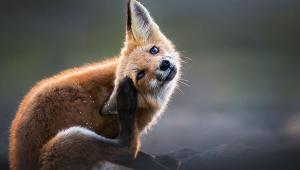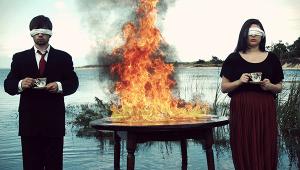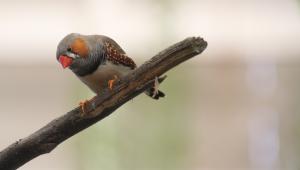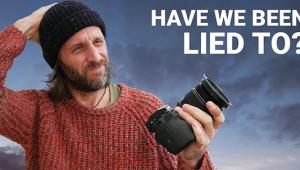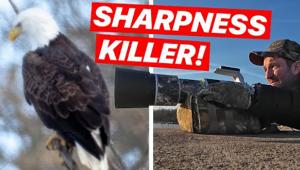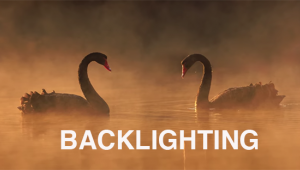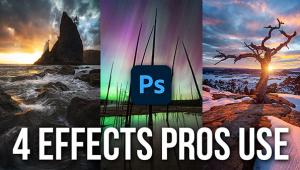How Christian Pondella’s Extreme Action Images Have Captured a Huge Following on Social Media

Professional rock climber Sasha DiGiulian is probably 200 feet off the ground as she makes her ascent on this limestone cliff in a canyon in Sardinia, Italy. On assignment for Red Bull, extreme sports photographer Christian Pondella captured this breathtaking image while hanging from a fixed rope that he had to climb, shooting with a Canon EOS 5D Mark III and a 24-70mm lens at 35mm. As DiGiulian would climb, Pondella had to ascend with her to both stay above her and out of her way. “Since the climb was severely overhung the challenge for me was trying to stabilize myself as you tend to spin in a circle when attached to a free hanging rope,” Pondella notes.
All Photos © Christian Pondella
Social media has clearly taken the world by storm and photographers have been quick to catch on. That is indeed true for extreme sports photographer Christian Pondella, who has a strong following on several social media platforms, particularly Instagram.
Pondella, who is adept at skiing and ski mountaineering, often finds himself in precarious situations to photograph athletes who ski perilous slopes or climb rock faces or ice formations and even BASE jump off cliffs. “I’m right there; I’m a part of the action,” Pondella emphasized.
Normally, he’ll carry two camera bodies and several lenses in a photo backpack, but climbs or skis with only one camera with an attached wide zoom lens joined to him at the hip, with possibly an extra lens in a pouch also attached to the waist belt on the opposite side. When the situation calls for it, and when the shoot site is fairly easily accessible, he may add Elinchrom lighting gear.
And how did Pondella get his professional start? He happened to be skiing the same slopes as the photo editor for Powder Magazine, and they started talking. And the rest, as they say, is history.
We talked to Pondella about his use of social media and how it’s been able to expand his reach as a photographer.

“I took the photo in France while on assignment for Patagonia, and what we are looking at is the French side of Mont Blanc and Chamonix. We’d stayed at a hut high up in the mountain so that we could get up very early to ski. Then at 10:30 at night, I went out there with a tripod to make this 30-second exposure with a 17-40mm lens at 17mm, at ISO 2500.”

With special permission obtained by Red Bull, Pondella covered this momentous event focusing on famed ice climber Will Gadd scaling the icy section of Horseshoe Falls (Niagara Falls). “I was hanging from a rope over the edge with a Canon 1D X remotely triggering a Canon 5D (the exposure shown) that was attached to the base of a Red Camera on a boom (provided by the film crew), basically getting two shots at once.”
Getting Started In Social Media
Shutterbug: When and why did you get into social media?
Christian Pondella: It started with Facebook in 2007. I did a job involving a couple of videographers from England who used Facebook, and they turned me on to it. At the time, it was a combination of posting for friends and updates on my work. About two years ago, I switched my focus to Instagram, where the focus is clearly on my photography, although I still post to Facebook for work. For a photographer, Instagram is currently the best social media platform. It’s essentially an instant portfolio.
SB: To what do you attribute your Instagram popularity?
CP: I think it’s the type of imagery I shoot, namely adventure sports. What’s more, people can share my experiences vicariously, without subjecting themselves to the same kinds of harrowing situations.
SB: We were marveling at how and why some pictures on your Instagram page get so many more Likes than others. Any explanation for that?
CP: That’s a good question. It’s funny, some photos that I don’t think will get a good response, get a huge response. Other photos that I think will get a big response, don’t. I think, in general, if I shoot a beautiful sunrise or sunset, those images do pretty well. People are into that eye candy. But then I’ll post something from a professional standpoint that may be more difficult to achieve or may be more artsy or more moody and that will get fewer Likes. But I post those kinds of images to engage fellow pro photographers who follow me—they’ll be the ones who truly appreciate the images I worked hard to create and give me positive feedback. And that, to me, is very important, hearing what my peers have to say.
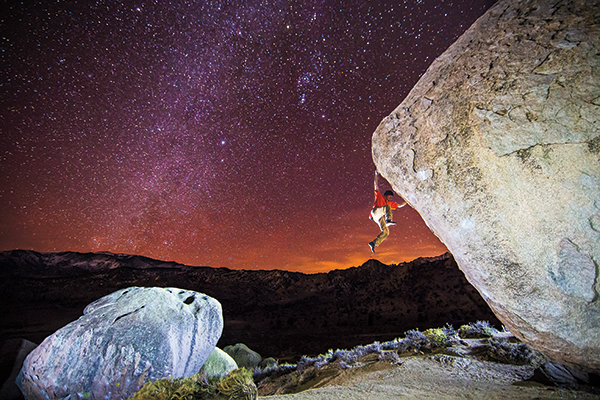
Christian Pondella shot this at Buttermilk, a world-famous bouldering site in Bishop, California. “I wanted to get a shot of this climber with the Milky Way behind him, so I created a composite. In one frame, I used an Elinchrom Ranger and Quadra to freeze him. Then I made a 25-second exposure without the climber, light-painting the surrounding area with an LED flashlight, which allowed me to capture the starry sky.”

Pondella captured Chris Benchetler for Atomic Skis at Grand Hirafu in Hokkaido, Japan, at night. “The slopes were illuminated at intervals with stadium-style lights (that’s where the background glow is coming from), plus the skier was wearing a helmet with a high-powered headlamp facing down, which caught the snow as it billowed up.” The camera was a Canon EOS-1D X at 12 fps, ISO 6400.
Social Media As a Promotional Tool
SB: What does social media do for you that your website doesn’t, in terms of getting your images out there?
CP: I would never have as many photos on my website [as I do on social media and Instagram]. I want my website to be a showcase of my best images that would exemplify what I do for potential clients and agencies.
SB: Is there a special formula for getting your work noticed on social media? Any do’s and don’ts?
CP: Someone told me, when I first started, don’t post any food or family photos. I guess if I was going to do that, I’d open up a personal Instagram account and keep it private. As a photographer, I think it’s important just to post good photos. For me, social media is definitely the way forward. At least, right now it is. It’s a huge wave of photography. It’s a huge numbers game. I think there’s a happy balance between spending too much time on it and not enough time.
SB: Do you rely entirely on social media and your own website to promote your services?
CP: Yes, both. I don’t use any other promotional tools. I also feel the editorial side of my work is quite important. I still stay pretty involved in getting my photos in editorial. That’s how I started my career. I think it’s really important to keep your photos in front of the public on the printed page. For me, seeing your photo printed in a magazine is the ultimate place to have your image published. Being a senior photographer for Powder Magazine helps toward that. The magazine is known for having the best photography of all the ski publications. On the commercial side, I do a lot of work for Red Bull, although much of that goes on a special website (redbullcontentpool.com). It serves as kind of a stock agency for various media outlets. I also submit work to Getty’s editorial content, not stock. I don’t shoot for stock specifically.

On assignment for Red Bull, Pondella captured ice climber Will Gadd ascending what remains of a glacier at the peak of Mount Kilimanjaro in an effort to raise awareness for global warming. “We spent 10 days on the mountain. These ice formations were amazing! With scenes such as this, the client understands that the overall view is just as important as the athlete, so we don’t necessarily have to show him up close and personal.”

“I shot this while on assignment for Red Bull, in Moab, Utah. This is Miles Daisher’s 4,000th BASE jump, which is more than any other human being has ever attempted. I used my 15mm fisheye, with the camera on a 12-foot pole extended beyond the edge of the cliff, remotely triggered. He ran out underneath the camera and jumped while doing a backflip, with the parachute opening maybe 50 feet after this shot was taken. The height of the jump was around 300 feet.”
Posting To Instagram
SB: How large are the files that you post to Instagram?
CP: I always save them at 2200 pixels on the long side, 300dpi, 70 percent JPEG compression. In the past, Instagram photos would always be cropped down to square, but in the latest release, you can now post full-frame horizontal images. You can also post verticals, but verticals do get cropped down a bit. But by posting verticals, you get the most real estate per image. Remember, we’re talking about the image you’d see on a smartphone, and verticals require little if any white letter boxing around the image. Generally I’ll go square for horizontal shots to get the most real estate from them, so they’re presented larger, for greater impact.
SB: Do you post on the road or when you’re home?
CP: More when I’m home. When I’m on the road, I’m usually too busy or too tired. Also, because I’m shooting on assignment, it becomes a balancing act of what to post and what not to post. You certainly don’t want the public to see your best shots before your client does, but on the other hand, you still want to post something from that trip. So you post your outtakes—good, not great shots, the ones you won’t submit to your client. Some photographers may take a different view and still post their best shots. Then again, if a client sees that, he may not want to run it in print. I find that some photo editors care and others don’t. You just have to figure out which is which before taking that next step. So it depends on what I’m shooting and whom it’s for.
SB: Any closing comments?
CP: Social media has generated a lot of income and work for me as another platform for clients to see my images. On the other hand, I have also lost jobs because of it, because clients have opted to hire someone with more followers on Instagram. It has almost turned into a numbers and popularity contest. It seems to be shifting to how many followers a photographer has to determine his or her merit, as opposed to who is the most qualified for the job based on a photographer’s portfolio. I think some clients are more impressed by numbers as opposed to actual photos.
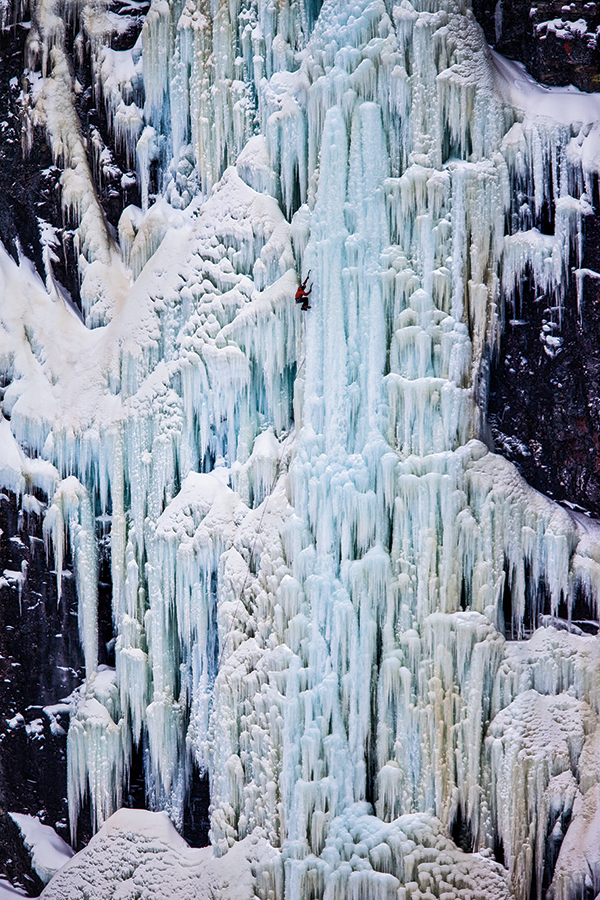
“This was an incredibly technical climb. I’m across the way on the opposing peak from Will Gadd, shooting for Red Bull in Eidfjord, Norway. This was one of those unusual situations where I had to use a 300mm f/2.8, with a 1.4x converter, no less. I knew that, to get this shot, I had to keep going higher and higher. In the end, I had to rappel to get back down.”
What’s in My Gear Bag
* Canon EOS 5D Mark III
* Canon EOS-1D X
* Canon EF 14mm f/2.8L II USM
* Canon EF 24-70mm f/2.8L II USM
* Canon EF 70-200mm f/2.8L IS II USM
* Canon EF 300mm f/2.8L IS II USM
* Canon EF 15mm f/2.8 Fisheye
* Canon EF 24mm f/1.4L II USM
* SanDisk Extreme Pro CompactFlash cards
* Spare camera batteries
* F-stop Ajna or Ultralight photo backpack
His Favorite Setup
“My favorite setup is my Canon 5D Mark III and F-stop Navin (fstopgear.com) attached to my hip, with a 128GB SanDisk Extreme Pro in the camera. I never change CF cards in the field!”
Christian Pondella operates out of Mammoth Lakes, California. To see more of his work, visit christianpondella.com or find him on Instagram (@christianpondella).
- Log in or register to post comments











